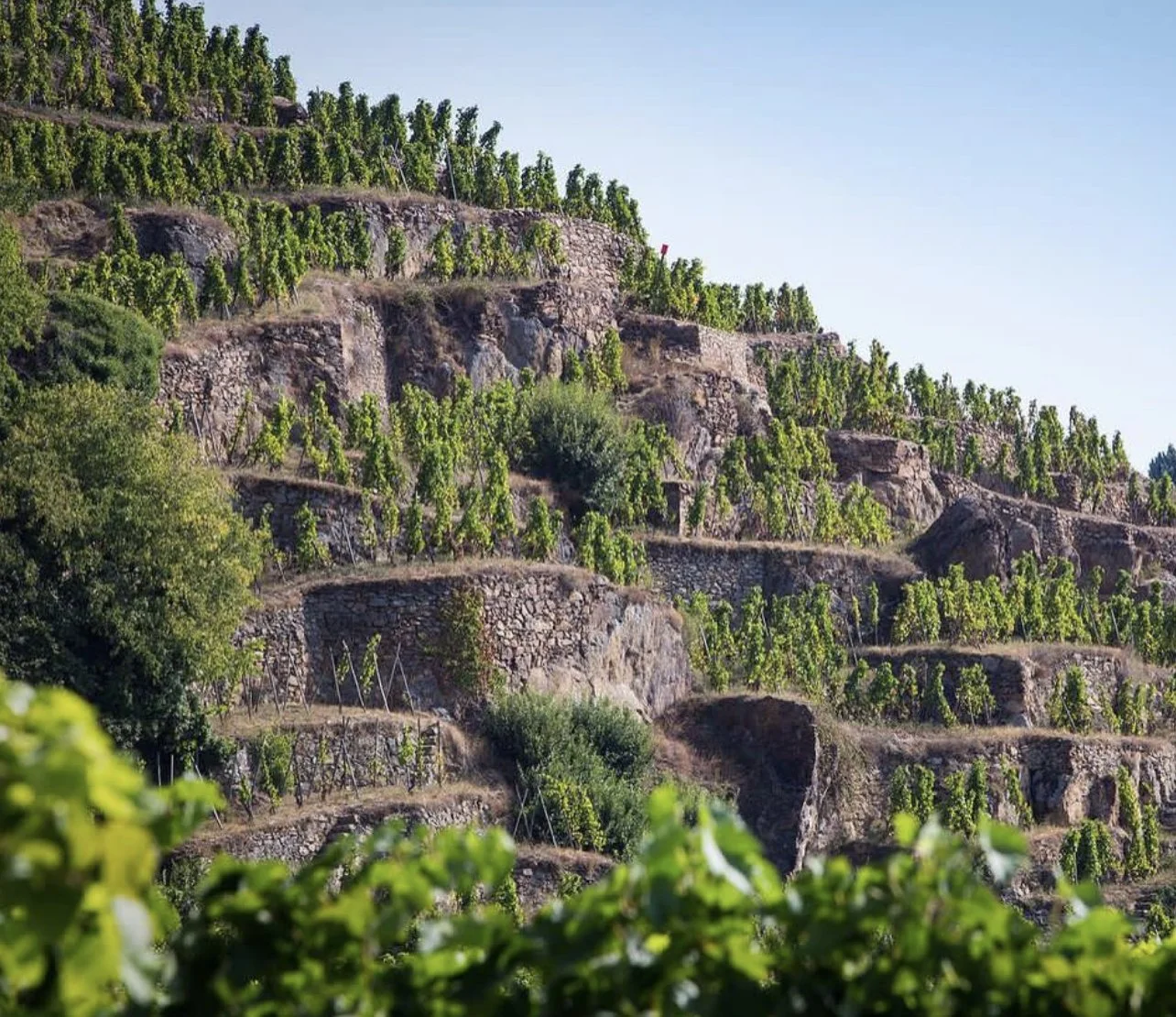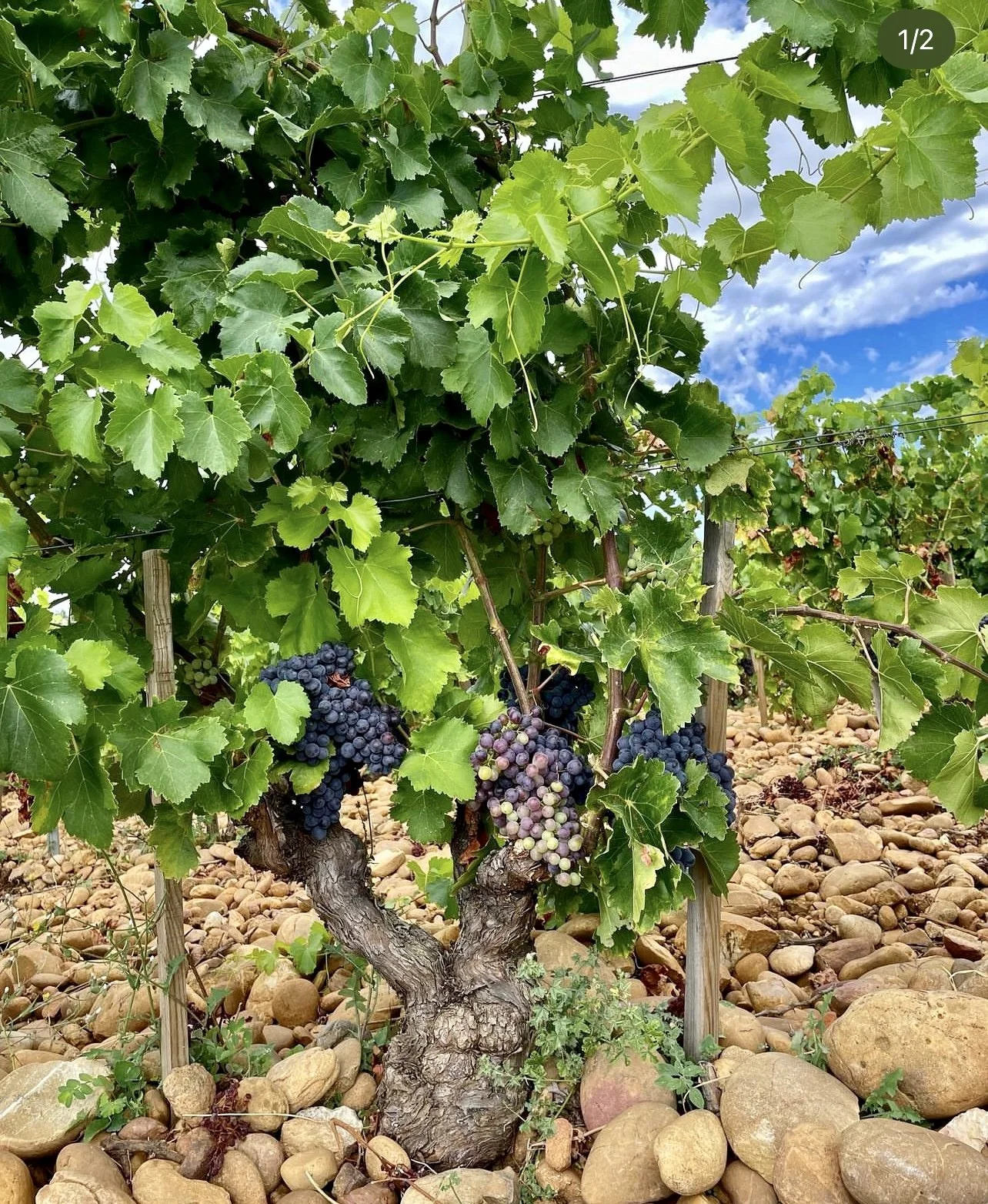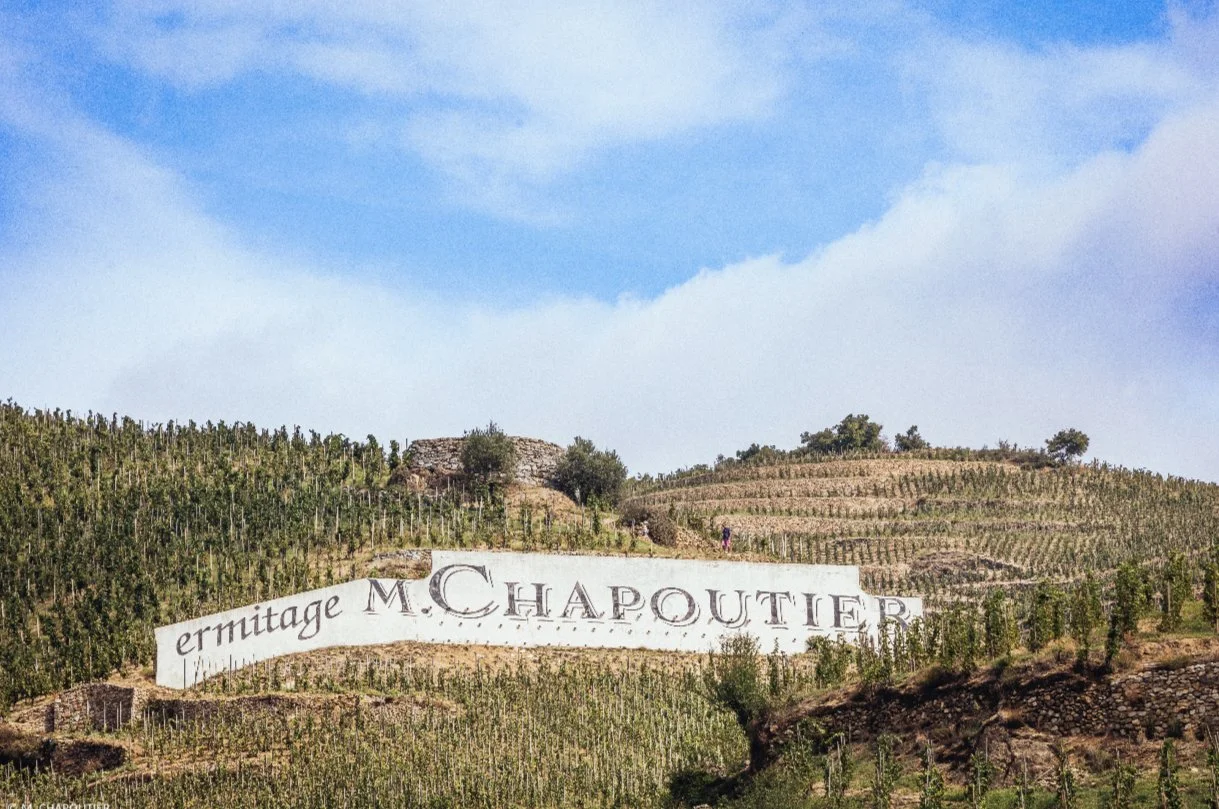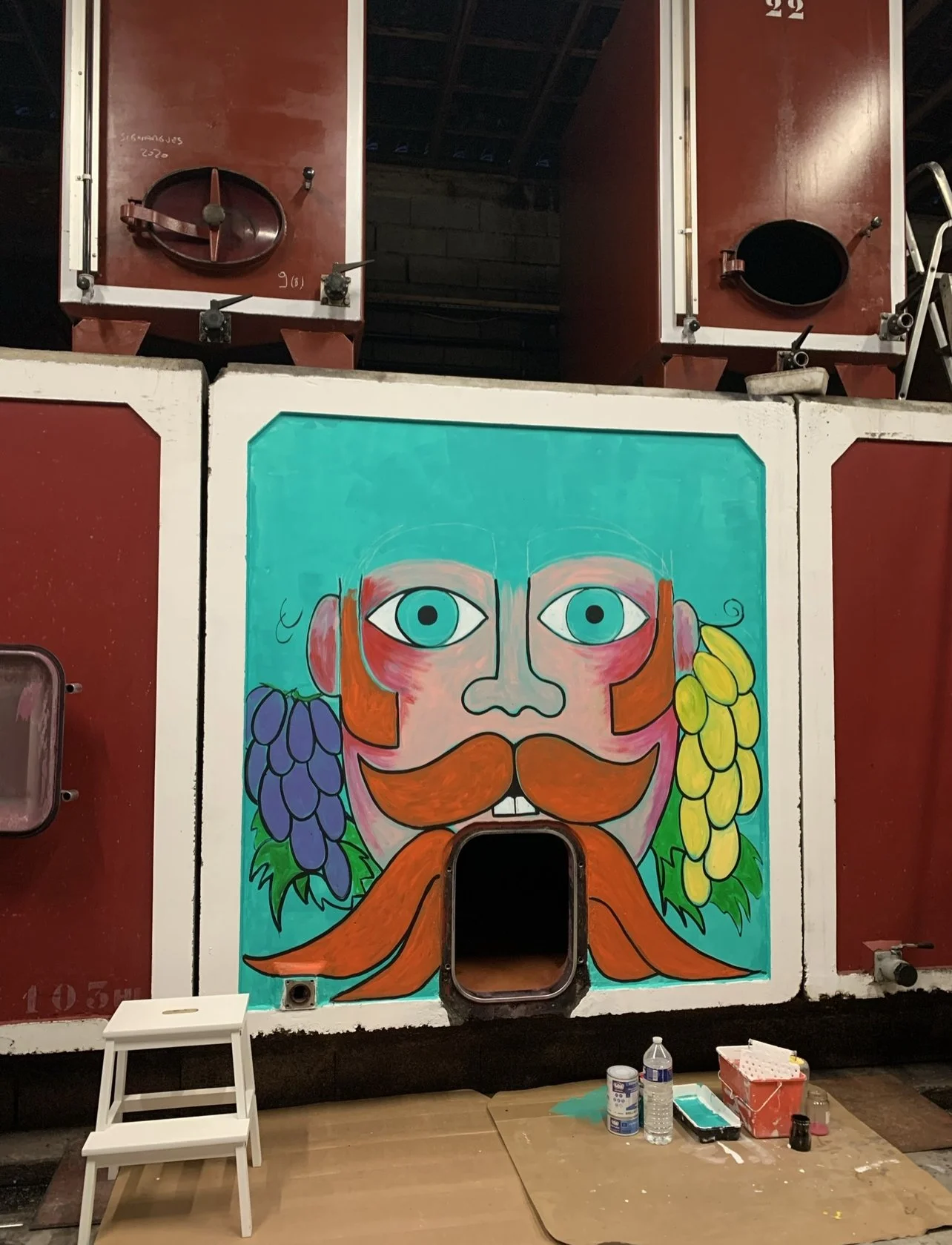Why You Should Be Drinking White Wine from The Rhône Valley
/When one thinks of the Rhône Valley, images of its illustrious red wines—inky-colored, bold Syrah from the north and fruity Grenache-based reds from the south—come to mind. But while these reds are loved for good reason, they're not the only game in town. The whites from this key wine-producing region in the southeast of France are starting to gain recognition for their own unique qualities and are an intriguing alternative worth exploring.
One Region: Two Landscapes
The Rhône Valley is split into two distinct regions: the north and the south. These areas vary significantly in terms of climate, topography, soils, and grape varieties cultivated.
In the Northern Rhône, you’ll find a rugged terrain of steep hillside vineyards. Winters here are harsh, cold, and wet, while summers are hot and windy. The Syrah-based red wines produced here are legendary, with great complexity and distinctive flavors of dark berries, olives, black pepper, and savory, gamey nuances.
Steep, terraced vines in the Côte-Rotie. Photo: @marcheauxvinsdechavanay
While the red wines of the northern Rhône command the spotlight, it's worth noting that white wines, representing a mere 5% of the region's production, offer a delightful contrast to their red counterparts.
One of the region’s most highly regarded white wines is made from Viognier grapes grown in the Condrieu appellation. Condrieu spans just 250 acres and enjoys ideal conditions for Viognier to thrive: a continental climate with steep, sun-soaked vineyards of granite and shale. This white grape variety produces fragrant, full-bodied, age-worthy wines with notes of apricot, peach, honeysuckle, and white flowers.
Marsanne and Roussanne are the two other white grapes found in the northern Rhône that are frequently combined to craft complex, age-worthy white wines. Less aromatic than Viognier, these two varieties are distinguished by their stony, mineral qualities. Marsanne imparts structure and richness, while Roussanne adds elegance and floral aromatics. Together, they create balanced wines with flavors ranging from citrus and stone fruits to honey and toasted nuts.
Interesting tidbit: The red Syrahs of Northern Rhône can be blended with up to 20% Viognier, although most producers cap it at 5% or less.
In the Southern Rhône, you’ll find vineyards on gentler hills or flat alluvial plains where the grapes receive abundant amounts of direct sunlight during the growing season. The area is primarily known for rich and fruity red wines with scents of ripe cherries, raspberries, and blackberries, often accompanied by spicy, herbal notes and garrigue, a term for the local wild herbs.
Autumn in The gentle slopes of the southern Rhône. Photo: Lisa Denning
In contrast to the limited variety of white grapes in the north, the Southern Rhône is planted with several, including Grenache Blanc, Marsanne, Roussanne, Viognier, Ugni Blanc, Clairette, Bourboulenc, Picpoul, and even Vermentino (known locally as Rolle). Nevertheless, despite this diverse range, white wine accounts for just 7% of the southern Rhône’s overall production.
The white wines here are typically blends and, therefore, can come in a range of styles, making it difficult to pinpoint specific characteristics.
Generally speaking, the white wines of the southern Rhône reflect the warm Mediterranean climate, displaying opulent texture and notes of lemon curd, stone fruits, and melon, complemented by a refreshing minerality. The whites here are typically blends of several grapes which gives wine producers the ability to make a range of styles. When Viognier and Ugni Blanc are included, the wines tend to be rich and fruity. Alternatively, blends featuring Grenache Blanc exhibit spiciness, often described as having notes of white pepper. Roussanne-driven wines, on the other hand, typically have more herbal nuances, while Marsanne-based wines can take on honeysuckle flavors as the wine matures.
One of the most famous southern Rhône white wine appellations is Châteauneuf-du-Pape, whose whites provide an excellent complement to the reds for which this region is famous. Often a blend of Grenache Blanc, Clairette, Roussanne, and other local varieties, these whites typically offer freshness, minerality, and complexity. However, they, too, come in a range of styles, especially dependent upon the type of soil the vines grow in: clay, sand, or limestone.
Châteauneuf-du-Pape vineyard full of rocks, locally known at ‘Galets.’ Photo: @thomas_bartolucci
Curious to learn more? One of the best ways is by tasting several Rhône whites. Here’s a selection of recommendations to help get you started.
Northern Rhône Whites
Benjamin et David Duclaux Cuvée Les Caillets Condrieu 2021. ($60) A bright, fresh take on Viognier offering restrained ripeness and concentration; apricot and pineapple aromas; a textured, saline palate with a long finish.
Héritiers Gambert Cave de Tain Nobles Rives, Hermitage Blanc 2019. ($40) Marsanne (95%) Roussanne (5%) blend; notes of lemon blossom, vanilla, and milk caramel, round and smooth on the palate with a touch of elegant bitterness.
Photo: M. Chapoutier
M Chapoutier Chante-Alouette Hermitage Blanc 2018. ($135) 100% Marsanne; aromas of honeyed walnut, brioche, nutmeg, and dried apricot. On the palate, balanced acidity; citrus, creamy butterscotch, toast, and almond on the finish.
Julien Pilon dimanche a lima Saint Joseph 2021. ($35) Marsanne and Roussanne blend, 50/50; rich and aromatic with light florals, pear, and apple fruit with that distinct almond nuttiness.
Southern Rhône Whites
Domaine des Romarins Côtes du Rhône Blanc 2022. ($16) Honeysuckle, apricot, and wet stone minerality with a richly complex finish of spiced cedar and orange peel.
Creating wine and art In the cellar of Domaine des Romarins. Photo: lisa Denning
Ferraton Samorëns Côtes du Rhône White 2020. ($18) Grenache Blanc ($25) Grenache Blanc (60%), Clairette (40%). Aromas of white flowers and stone fruit; balanced with zingy acidity, freshness, texture, and body.
Chateau Simian Jocundaz Côtes du Rhône Blanc 2020. ($15) Made from 50 year old Viognier vines. Aromatic with notes of stone fruits, lemon and orange zests, and white flowers; creamy texture with a long elegant finish. Pair with salmon crudo or fish terrine.
Maison Sinnae Excellence, Côtes du Rhône Villages Laudun Blanc 2021. ($25) Primarily Grenache Blanc; aromas and flavors of chamomile, lychee, and lanolin with a strong mineral component and a hint of toast.
La Nerthe Les Cassagnes Cotes du Rhone 2021. ($23) Viognier (30%), Roussanne (30%), Grenache Blanc (30%), Marsanne (10%); very aromatic with notes of pear, peach, lime and floral aromas; well-balanced and elegant.
Famille Gassier Costières de Nîmes Nostre Païs Blanc 2020. ($25) An aromatic blend of Grenache Blanc, Roussanne, Clairette, Viognier, and Bourboulenc; notes of apricots, peaches, and scrubland. On the palate, the tangy structure translates into notes of candied lemon, beautifully textured, and superbly balanced.
Chateau de Montfaucon Comtesse Madeleine LIrac 2021. ($39) 40% Marsanne, 35% Clairette, 20% Grenache Blanc, 5% Picpoul. Fermented and aged in French oak barrels for nine months. Expresses the complexity of the distinguished Lirac Cru. Organic.
Domaine du Vieux Télégraphe Châteauneuf-du-Pape (La Crau) Blanc 2012 ($110) A blend of Clairette, Grenache Blanc, Roussanne, and Bourboulenc, rich, robust and layered with white floral aromas and generous fruit (ripe pears, peach, apricots, and orange zest), complemented by vibrant acidity and salinity; finish that keeps on going.
In the vineyards of Chateau Simian. Photo: Lisa Denning































